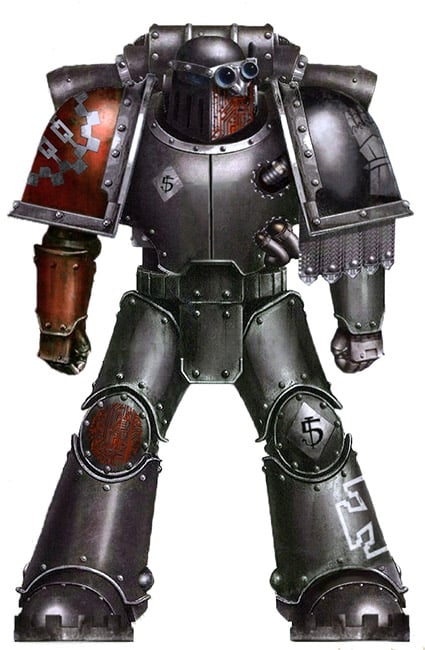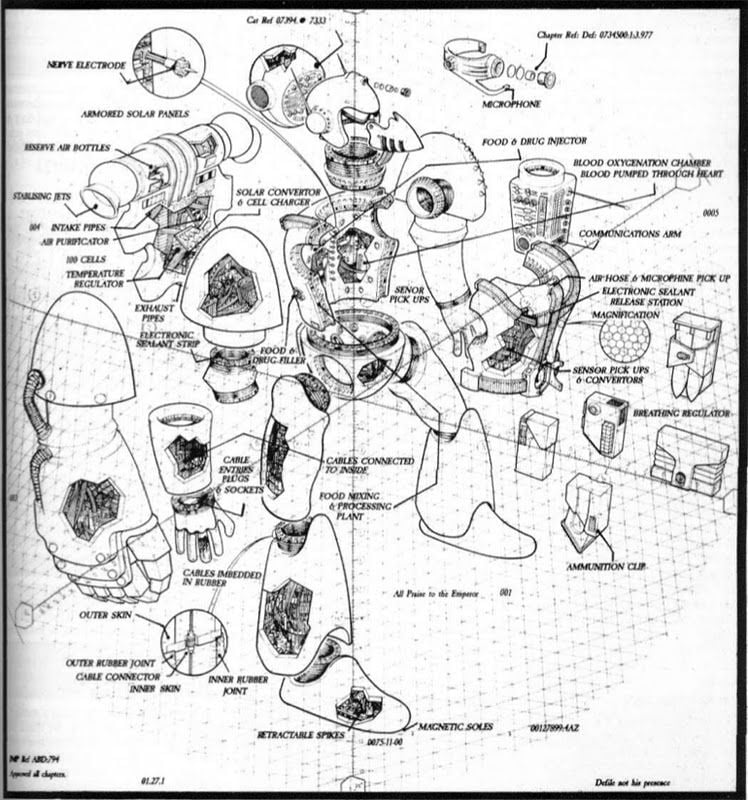Warhammer 40K: The Power Armor Of The Great Crusade – Mk.III Power Armor
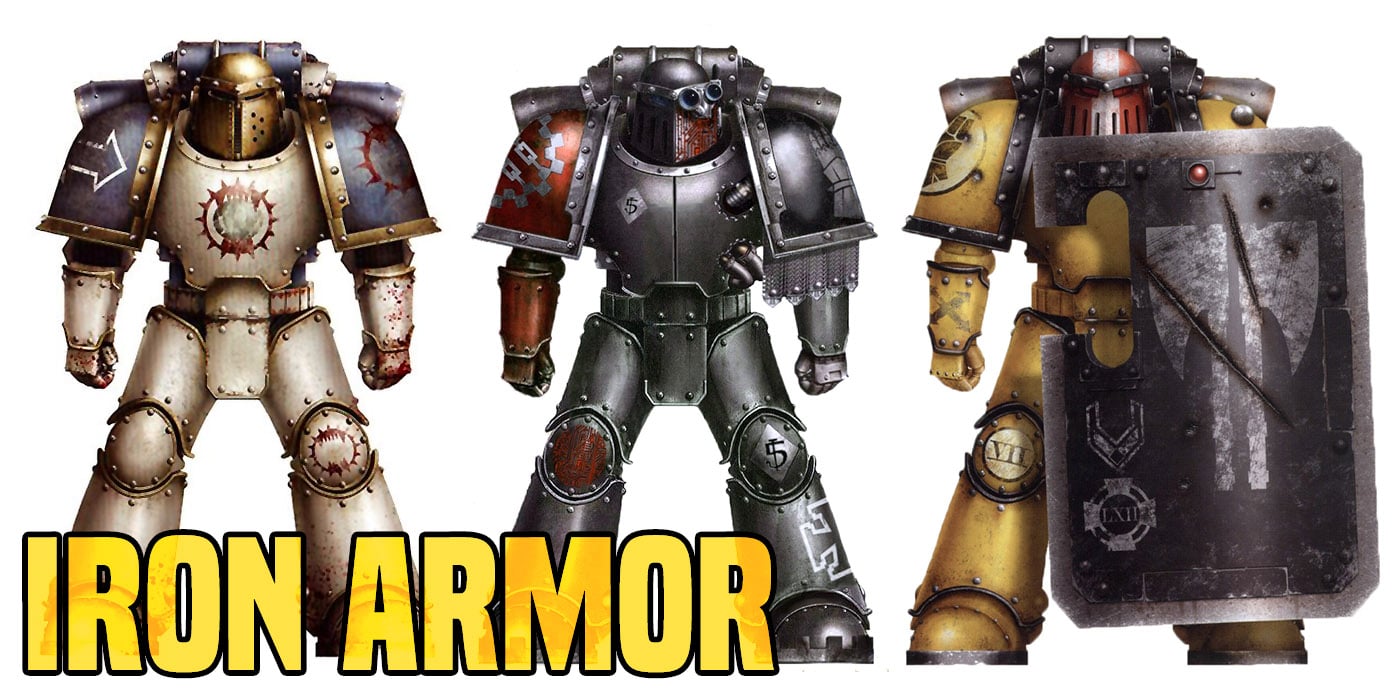

Today step back 9000 years to before the Horus Heresy with a detailed look at the brutal Mk. III Iron Armor. Come forth tech adepts.
Power Armor Overview
Power armour is fully sealed, isolating the wearer from the outside environment and protecting him from gas weapons and harsh atmospheres. It also commonly includes numerous auxiliary systems such as communicators and auto-senses. The backpack contains the main power plant, environmental system and additional stabilizers. Whilst power armour is most commonly associated with the Space Marines, the Sisters of Battle and many Inquisitors also use powered armour of one sort or another. Typically however these armours may not contain the same strength-enhancing properties or life-support functions of Space Marine power armour, nor do they provide the same amount of protection. All armour may further be augmented by various artifacts, relics and enhancements such as pauldrons and greaves.
Power armour has been in use since before the Age of the Imperium, from the techno-barbarians of Earth to the original Space Marines created by the Emperor. Over the history of the Imperium, power armour has developed into many different forms. Need, circumstances and recovery of new materials and technology has shaped the armour’s evolution.
Space Marine Power Armour
Space Marine Power Armour is an extraordinarily sophisticated defensive system which combines huge resistance to physical damage with a sensory array and sealed environment which protects its wearer from the ravages of the void and alien atmospheres. Integrated with the armour are networks of electro-motivated fibre bundles which mimic and augment the muscular strength of the wearer. The true genius of the design, however, lies in its close integration with the already superhuman physiology, senses and reflexes of the Space Marine within. Working in concert, armour and Astartes together become a weapon without equal.
Each suit of Space Marine Power Armour is a work of supreme artisanship, and although it may be one of many, each is a unique artifact whose spirit and history is of deep spiritual significance to both the Chapter to which it belongs and the Space Marine who wears it. It can take decades to complete just one of the new Mk VII power armour, so it is often easier to make spare part for an existing suit than it is to make a completely new one.
There are numerous different Marks of Power Armour, most of which date back in terms of design and application many thousands of years ago to the time of the Great Crusade and the Horus Heresy. Each has its own lore and genesis in place and time. Even in the 41st Millennium some intact suits from this near-mythical age survive in active service as war-relics of the Space Marines. Countless others have been produced or reacquired since, and different Chapters often have entirely different panoplies they can call upon to armour their forces. It is also far from uncommon for more recently fashioned armour to incorporate slivers or whole components from far older suits as revered connections to the past.
Space Marines go through an arduous process where they receive various implants culminating with the implantation of the Black Carapace, which allows the Marine a direct and instinctual interface with the armour, making it in effect a second skin. The advanced systems of Space Marine power armour also monitor the Marine’s biological functions, feeding the medical information to the Marine.
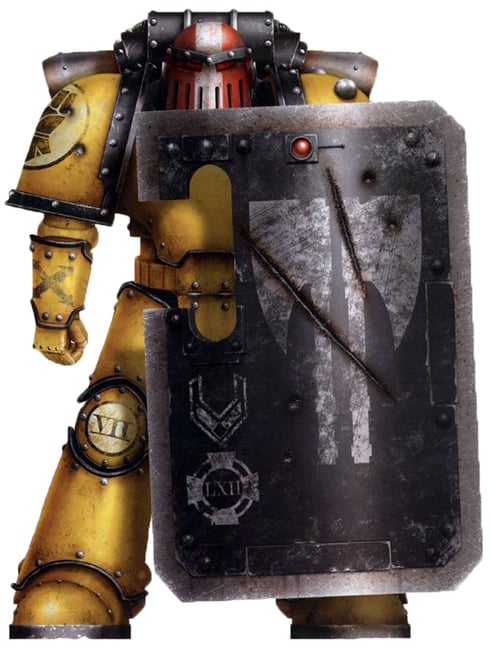
Imperial Fists Mk.III Power Armor (with Breacher Shield)
Components
While Space Marine Armour has evolved and changed over the Millennia, key components remain the same.
- Auto-senses: Contained in the helmet, these systems include thought-activated communication arrays and audio filters, targeting reticules and range finders, tactical displays and auspex-links, and a host of other features.
- Photolenses: Protect the Space Marine from light bursts and allow him to see in the infrared and ultraviolet spectrum’s as well as enable vision in low-light conditions.
- Respirator Vox Grill: This thought-activated device amplifies a Marine’s battlecry to deafening volumes and contains a respirator to filter out toxins and draw upon an internal oxygen supply.
- Auto Responsive Shoulder Plates: Shaped to deflect and absorb incoming blows, they usually display heraldry including Chapter, Company, and Squad symbols.
- Chestpiece: Designed to protect armored power cables.
- Backpack Power Unit: This houses the primary power core for the armour, as well as reserve cells and an emergency solar collector.
- Life Signs Monitor: Regulate a suite of life support functions, including an injection system that can regulate painkillers, anti-toxins, and combat stimulants.
- Nutrient Reservoir: A self-replenishing high-energy food store that can sustain a Space Marine’s metabolism. Thus during battle, there is no need for a Space Marine to eat or drink.
- Reinforced Greaves: These incorporate gyroscopic stabilizers and power units that can magnetize the soles of the armour’s boots, allowing Space Marines to walk on metal surfaces in the void of space or zero gravity environments.
Mark III “Iron Armor”
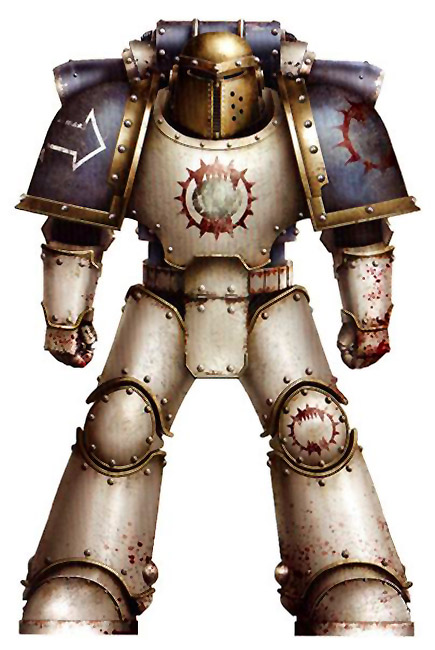
World Eaters Mk. III Power Armor
This model dates from the early days of the Great Crusade, waged close to the galactic core. Many of these worlds were the Squat Homeworlds, which were not pleased to find themselves the object of galactic conquest. The Squats’ independent and stubborn nature, along with the conditions of the fighting, spurred the creation of this new armour type.
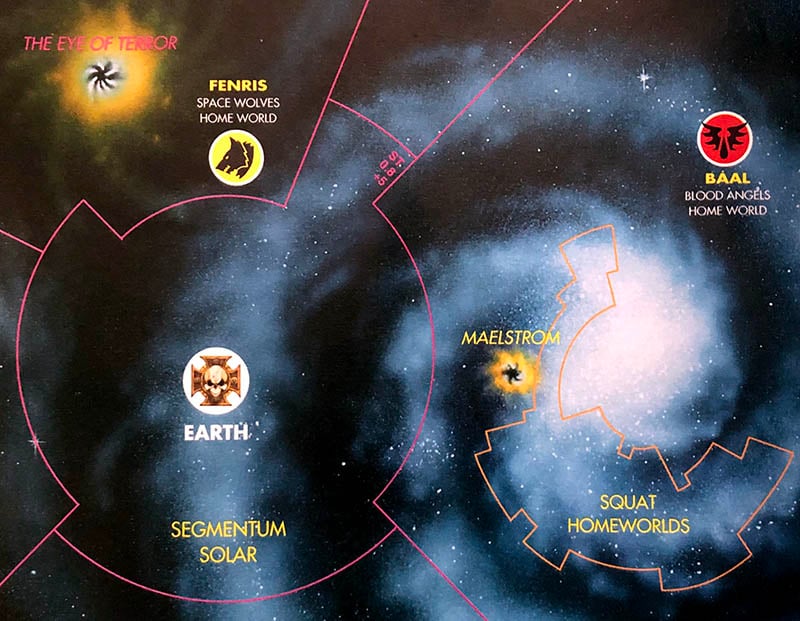 Location of the Squat Homeworlds
Location of the Squat Homeworlds
This armour was ideal when cover was minimal and combat was a matter of frontal assault. The most visually brutal and imposing of all the widely produced armour marks, the Iron Armour was a heavy, modified Mark II design (itself the first mass-produced Power Armour of the Crusade era). The Iron Armour’s structure has augmented frontal defence and incorporates additional ablative plates, and is intended foremost for use in boarding actions, tunnel assaults and void warfare, although it is considerably heavier and more power hungry than its contemporaries. The new helmet design is a heavily armoured model with sloping plates designed to deflect shots to the left and right, and inspired the Mark IV and VI helmet designs.
Mark III was never intended to replace the previous Mark II but to act as an optional suit specialized for situations where heavier frontal protection would be advantageous, such as in the close confines of spacecraft and mining complexes.< Because of this, no Legion was ever fully equipped with the Mark III. While successful in the conditions it was designed for, the armour is too clumsy and uncomfortable for conventional fighting. It is sometimes worn by ceremonial guards due to its visual brutality, and can also still be found used in close-quarters situations by various Space Marine Chapters.
It is commonly called the Iron Suit or Armorum Ferrum in recognition of its great strength.
Space Marine Power Armor Marks
Which mark of power armor is your favorite?

